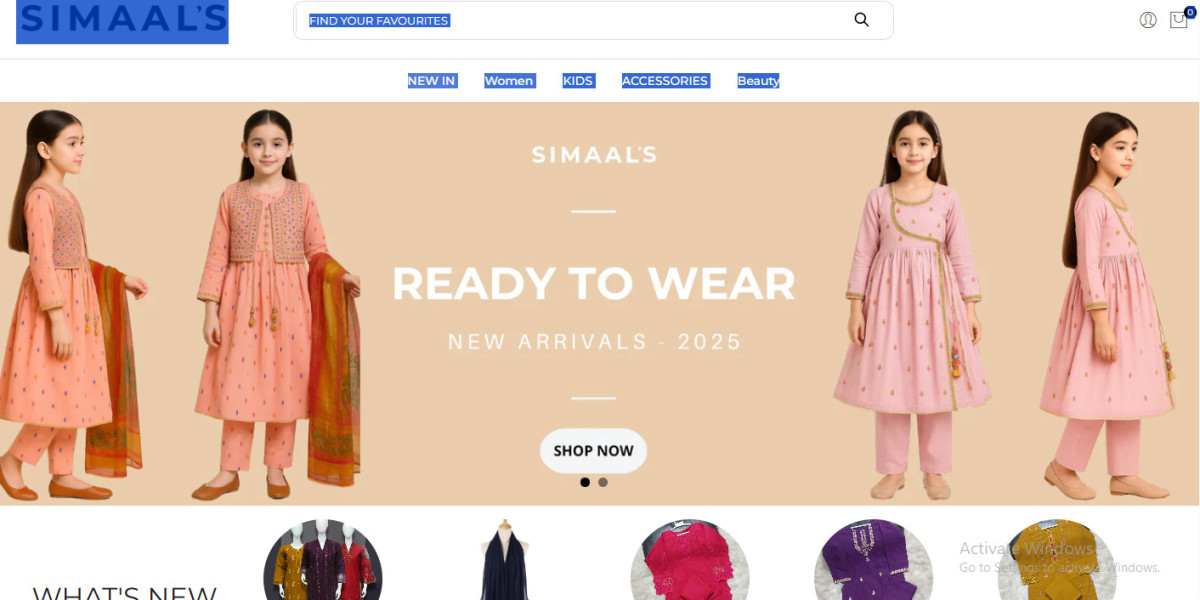Over the past decade, Pakistan has witnessed a significant surge in online shopping. What began as a niche activity limited to tech-savvy individuals has now become a mainstream part of consumer behavior across the country. In 2025, online shopping is not just convenient—it's a lifestyle. With millions of consumers now turning to the internet for everything from clothes and electronics to groceries and personal care products, the question arises: why is online shopping booming in Pakistan?
This article explores the multifaceted reasons behind the explosive growth of e-commerce in Pakistan, examining technological advancements, consumer behavior shifts, policy support, and market dynamics that have collectively fueled this transformation.
1. Rapid Digitalization and Internet Penetration
One of the most fundamental drivers of the online shopping boom is increased access to the internet. As of 2025, Pakistan has over 130 million internet users, with widespread 3G and 4G coverage even in semi-urban and rural areas.
Smartphone usage has skyrocketed, allowing millions to access shopping platforms on-the-go.
Affordable data packages and government initiatives have made internet more accessible.
Social media platforms have helped introduce digital habits among a broad spectrum of users.
This digital revolution has created a massive audience ready and willing to shop online.
2. Changing Consumer Behavior
The modern Pakistani consumer is better informed, more connected, and increasingly time-conscious. Factors influencing this behavioral shift include:
Convenience: Avoiding traffic, queues, and parking issues.
Product Variety: Access to a wide range of local and international brands.
Ease of Comparison: Tools to compare prices, features, and reviews.
Discount Culture: Seasonal sales, flash deals, and voucher codes attract more buyers.
Young consumers, especially Gen Z and Millennials, are driving this change, preferring digital-first experiences over traditional shopping.
3. Growth of Mobile Commerce (mCommerce)
Mobile commerce now dominates online shopping in Pakistan. Most platforms are optimized for smartphones, and many have dedicated apps that enhance user experience.
Daraz, Telemart, and PriceOye have high-performing mobile apps.
Push notifications, app-only discounts, and mobile payment integrations encourage frequent use.
With mobile penetration growing, the convenience of shopping through phones is a major contributor to e-commerce success.
4. Expansion of Payment Options
Initially, limited digital payment methods held back e-commerce. But now, Pakistan’s fintech ecosystem has matured significantly:
JazzCash, Easypaisa, and SadaPay offer secure, fast mobile transactions.
Buy Now, Pay Later (BNPL) services such as KalPay and QisstPay promote affordability.
More banks are enabling card payments and offering EMI plans.
COD (Cash on Delivery) remains widely available for hesitant or first-time shoppers.
These flexible payment methods have removed a major barrier to online shopping.
5. Improved Logistics and Delivery Networks
Timely delivery is critical to the online shopping experience. Logistics companies have invested heavily in building robust delivery systems:
TCS, BlueEx, Leopards Courier, and others now offer nation-wide delivery.
Same-day and next-day deliveries are becoming standard in metro cities.
Hyperlocal services like Bykea and Cheetay serve urgent and perishable needs.
These developments ensure that products reach customers quickly and safely, building trust and reliability.
6. The Rise of Social Commerce
Social media platforms like Facebook, Instagram, WhatsApp, and TikTok are now essential channels for online shopping:
Small businesses use social media to showcase and sell products directly.
Influencer marketing has become a major growth driver, especially in fashion and beauty.
Facebook Marketplace and Instagram Shops allow consumers to browse and buy without leaving the platform.
Social commerce has enabled home-based entrepreneurs and SMEs to flourish without needing full-scale e-commerce websites.
7. COVID-19 and the Acceleration of Digital Shopping
The COVID-19 pandemic acted as a catalyst for the shift to online retail. Lockdowns, social distancing, and health concerns drove consumers toward digital platforms:
Essential items like groceries, medicine, and hygiene products saw a spike in online orders.
Businesses that previously ignored e-commerce quickly adapted, launching websites and delivery partnerships.
Consumer habits formed during lockdowns have continued post-pandemic.
The pandemic significantly advanced e-commerce timelines by several years.
8. Youth Demographics and Digital Literacy
Pakistan has one of the youngest populations in the world, with nearly 60% of people under the age of 30. These digital natives are comfortable navigating online platforms and are more likely to:
Shop online for fashion, electronics, and education products.
Trust digital content and influencers.
Use mobile wallets and experiment with new services.
This demographic advantage ensures continued growth for the sector.
9. E-Commerce Support from the Government
The Government of Pakistan has introduced various initiatives to support digital commerce:
E-Commerce Policy Framework (2019) outlines plans to support infrastructure, cross-border trade, and consumer rights.
Digital Pakistan Initiative aims to improve connectivity, digital literacy, and access.
Tax incentives and training programs for startups and small businesses.
These policies foster an enabling environment for e-commerce businesses to thrive.
10. Increase in Trust and Awareness
One of the earlier hurdles to online shopping was a lack of trust. However, over time:
Platforms now offer secure payment gateways and buyer protection policies.
Consumers are more aware of return/refund options.
Online reviews and influencer opinions help validate product quality.
Brands are increasingly emphasizing authenticity and service quality.
With greater consumer confidence, online transactions have become more frequent.
11. Competitive Market Leading to Better Services
The e-commerce market in Pakistan is highly competitive. This benefits consumers in multiple ways:
Lower prices due to competition
Improved user interfaces and mobile app experiences
Personalized recommendations using AI
Loyalty programs and frequent deals
New startups are entering the space with innovative ideas, forcing incumbents to stay efficient and customer-focused.
12. Niche Markets and Specialized Platforms
The rise of niche platforms is also contributing to the boom. Examples include:
Bagallery for beauty and lifestyle products
PriceOye for electronics
Liberty Books for reading material
Naheed.pk for groceries
Such platforms cater to specific needs, attracting loyal customers with tailored offerings.
13. Access to Global Markets and Cross-Border Trade
Pakistani consumers now have more access to international brands and global marketplaces:
Amazon seller onboarding for Pakistani businesses opened cross-border trade avenues.
AliExpress and international shipping services have made it easier to shop globally.
Global dropshipping and freelancing communities are supporting product-based businesses.
This exposure to international e-commerce norms is raising expectations and improving local standards.
14. Consumer Empowerment and Reviews
Online platforms give customers a voice. Product reviews, rating systems, and complaint resolution tools empower buyers to:
Make informed choices
Share feedback that influences other buyers
Hold sellers accountable for quality
This culture of transparency builds community trust and accountability.
15. Environmental and Social Impact Awareness
Modern shoppers are increasingly conscious of their consumption choices. Online platforms have started to promote:
Eco-friendly packaging
Sustainable brands
Ethical sourcing and local artisans
This aligns with global sustainability trends and appeals to environmentally aware consumers.
Conclusion: A Digital Future with Boundless Potential
Online shopping in Pakistan is booming for a combination of technological, economic, social, and cultural reasons. From mobile accessibility and consumer convenience to fintech innovations and social commerce, the landscape is being shaped by dynamic forces that show no signs of slowing.
Looking ahead, the e-commerce industry in Pakistan holds immense potential. With continued investment, regulatory support, and a consumer-first approach, online shopping can drive economic growth, create jobs, and offer enhanced experiences to millions of people. Whether you are a buyer, seller, or entrepreneur, now is the time to engage with this fast-growing digital marketplace.








